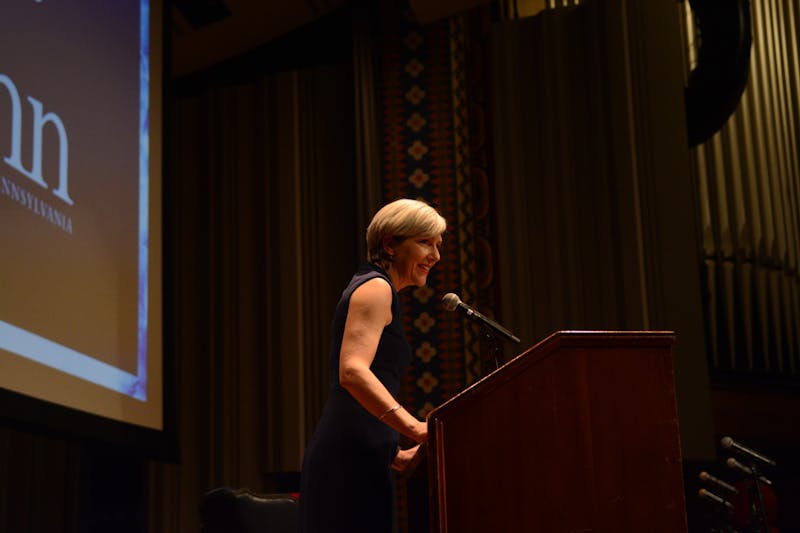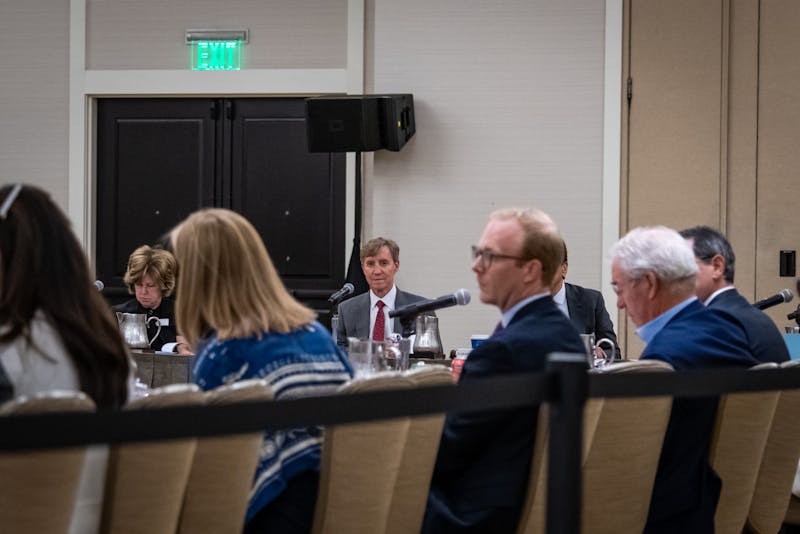Studying homosexual representations in artwork from antiquity to the present is not only a hobby for James Saslow -- it is also his job. Saslow, a professor of Art History at Queens College, delivered a lecture entitled "Researching Gay and Lesbian Art: Conceptual Roadblocks and Practical Pitfalls," Thursday night at the Institute of Contemporary Art. During the discussion, which was the ninth in an annual series co-sponsored by the ICA and the Philadelphia Lesbian and Gay Academic Union, Saslow promoted his new book, Pictures and Passions: A History of Homosexuality in the Visual Arts, and explained the research problems he encountered in the process of writing his book. The approximately 35-member audience that attended the lecture consisted mainly of Penn graduate students and various Philadelphia residents. Saslow started his lecture with a slide of the "Warren Cup," a jug from antiquity displaying a homoerotic scene between two men. "This is the sort of thing I thought I was looking for when I started researching gay art," Saslow said. Only later did he realize that "gay art does not have to be overtly homosexual." "There is a need to broaden the definition of gay art -- focusing not just on acts, but desires," he explained. With this new concept in mind, the scope of gay art broadened to include classics such as Thomas Eakins' "The Swimming Hole," Marsden Hartley's "Painting No. 47" and Michelangelo's "David" and the "Dying Slave," among others. Saslow amused the audience with a quotation from lesbian author Rita Mae Brown, who once joked that "if Michelangelo had been straight, the Sistine chapel would have been painted white with a roller." For well-known artists to be included as homosexual artists showed the "validation of one's own identity and fantasy," Saslow said. Saslow noted that the treatment of gay art -- from being morally accepted in ancient Greece and Rome to being considered taboo in the Middle Ages -- has varied significantly over time. A more recent trend, Saslow pointed out, is that people have become so desensitized to seeing erotic homosexual art that it evokes barely any reaction from the majority of museum-goers. [Gay art] is "no longer a source of energy and passion," Saslow said. Following the lecture, a Penn graduate student, who wished to be identified just by Chris, disagreed with Saslow's claim that homosexual art has now lost much of its "shock value" and "political urgency." "It's not maybe an issue in certain academic urban circles, but there still is a problem in middle America," the student said. For many in the audience on Thursday, Saslow's talk provided an opportunity to hear an expert discuss one of the more popular -- if not controversial -- topics in art circles today.
The Daily Pennsylvanian is an independent, student-run newspaper. Please consider making a donation to support the coverage that shapes the University. Your generosity ensures a future of strong journalism at Penn.
DonatePlease note All comments are eligible for publication in The Daily Pennsylvanian.







